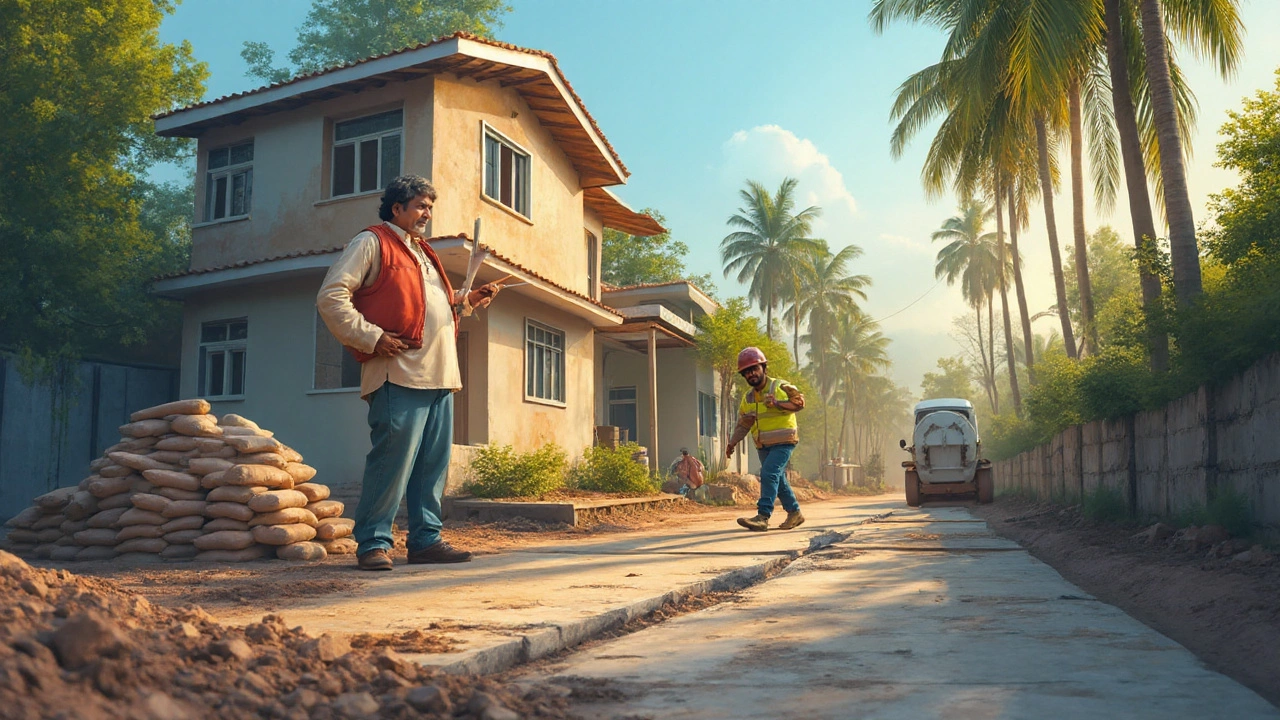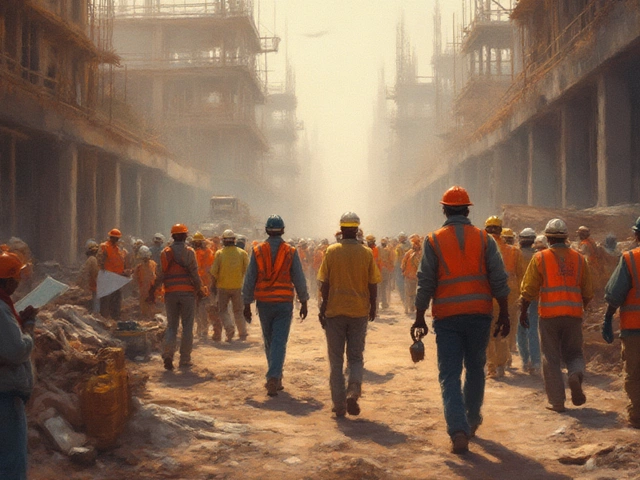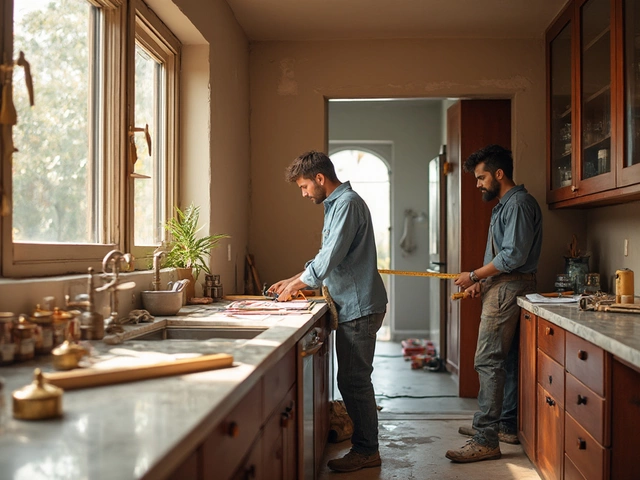Can I Fix My Own House Foundation? DIY Guide & Key Considerations
Foundation Repair Difficulty Checker
Assess Your Foundation Issue
Please select the best option for each question to determine if your foundation problem can be handled DIY or needs a professional.
House foundation is a structural base that transfers a building’s loads to the ground. When that base starts shifting, cracking, or sinking, the whole home feels the impact. Homeowners often wonder whether they can tackle the problem themselves or if professional help is mandatory. The answer isn’t black‑and‑white; it hinges on the type of damage, soil conditions, local building code, and the tools you have at hand.
Why foundations fail in the first place
Before you grab a shovel, understand the forces that make foundations move. The most common culprits are:
- Changes in soil bearing capacity, often caused by drought, heavy rain, or nearby excavation.
- Improper concrete footings design, such as insufficient width or depth.
- Excessive foundation settlement, where the ground compresses unevenly under load.
- Poor drainage system that allows water to pool around the perimeter.
Each of these factors creates a different repair path. Knowing the cause lets you target the fix rather than applying a blanket solution that may fail later.
Assessing the damage yourself
Start with a visual inspection. Look for these tell‑tale signs:
- Cracks wider than 1/4 inch in interior walls or concrete slabs.
- Doors and windows that stick or won’t close properly.
- Uneven floors-use a level or a long straightedge to spot a slope greater than 1/8 inch per 10 feet.
- Gaps where the foundation meets the exterior wall, often visible after a heavy rain.
If more than one symptom appears, or if the cracks are growing, bring in a structural engineer for an on‑site assessment. Their report will reference the local building code, which sets minimum standards for load‑bearing capacity, waterproofing, and repair methods.
DIY repair options and when they’re appropriate
There are three main DIY approaches that homeowners with basic carpentry or masonry experience can attempt. All three assume the damage is limited to surface cracks or minor settlement.
| Method | Typical Cost (GBP) | Skill Level | Best For | Expected Lifespan |
|---|---|---|---|---|
| Concrete slab jacking | £800-£1,200 | Intermediate (hydraulic jack operation) | Minor settlement in slab‑on‑grade homes | 10-15 years |
| Epoxy crack injection | £300-£600 | Beginner‑Intermediate (mixing & injection) | Hairline to 1/4" cracks in foundations | 5-10 years |
| Helical pier installation (DIY kits) | £1,500-£2,500 | Advanced (drilling & torque control) | Significant settlement, especially in expansive soils | 20+ years |
| Professional push pier repair | £3,000-£6,000 | N/A (contractor performed) | Severe settlement or structural movement | 30+ years |
Notice the “Helical pier” row. While many kits market themselves as DIY‑friendly, installing a pier safely requires proper torque measurement and knowledge of load calculations. If you’re not comfortable with that equipment, it’s wiser to let a contractor do the heavy lifting.
Step‑by‑step guide to epoxy crack injection
Epoxy injection is the most accessible DIY method for hairline to moderate cracks. Follow these steps:
- Clean the crack with a wire brush and a shop‑vac to remove dust.
- Seal the surface with a low‑viscosity epoxy primer; let it cure for 30 minutes.
- Insert injection ports (small silicone tubes) every 6-8 inches along the crack.
- Mix the two‑part epoxy according to the manufacturer’s ratio, typically 1:1 by volume.
- Using a caulking gun, pump the epoxy into each port until it begins to ooze out at the opposite side. This indicates the crack is fully filled.
- Remove the ports, smooth the surface with a putty knife, and let the epoxy cure for 24 hours before applying a sealant.
After the repair, monitor the crack for any new movement over the next three months. If it re‑opens, the underlying settlement issue wasn’t addressed and professional help is needed.

When to call a professional
Even the most confident DIYer should hand over the job in these scenarios:
- Cracks wider than 1/2 inch or those that are actively widening.
- Foundation movement that has caused doors, windows, or walls to misalign significantly.
- Evidence of water intrusion that cannot be fixed with simple drainage improvements.
- Your local building code mandates that certain repairs be performed by licensed contractors.
Professional services-such as push piers, drilled piers, or full underpinning-require specialized equipment, engineering calculations, and often a permit. Trying to DIY these without the right background can make the problem worse and void insurance.
Cost considerations and budgeting
Budgeting is a crucial part of any repair plan. Here’s a quick cost breakdown (average UK prices, 2025):
- DIY epoxy kit: £250-£500.
- DIY slab jacking kit: £600-£1,000 (plus rental of hydraulic jack).
- Helical pier kit (including torque wrench): £1,500-£2,200.
- Professional push pier job: £3,500-£7,000 (incl. engineer’s report).
- Full underpinning: £12,000-£30,000, depending on size and soil type.
Remember to factor in ancillary costs: site preparation, disposal of old materials, and possible temporary relocation if the work is extensive.
Maintaining a healthy foundation after repair
Repair is only half the battle; prevention saves money and headaches later. Implement these habits:
- Grade the landscaping so water drains at least 6 inches away from the foundation walls.
- Install or maintain a drainage system such as French drains or a sump pump.
- Keep gutters and downspouts clear; extend downspout run-outs at least 3 feet.
- Limit the weight of heavy items (like large planters) near the foundation.
- Schedule an annual visual check-small cracks can appear before major settlement.
By staying on top of moisture control and load distribution, you’ll reduce the likelihood of needing another major repair for years to come.
Key takeaways
Can you fix your own house foundation? Yes, for minor cracks and limited settlement you can achieve reliable results with epoxy injection, slab jacking, or a well‑executed helical pier kit-provided you respect the limits of your skill set and local regulations. For anything beyond that, enlist a structural engineer and a licensed contractor.
Frequently Asked Questions
How can I tell if a crack in my foundation is serious?
Cracks wider than 1/2 inch, those that are actively growing, or those that cause doors and windows to misalign usually indicate a serious problem that needs professional assessment.
Do I need a permit for DIY foundation repairs?
In most UK councils, minor repairs like epoxy injection don’t require a permit, but larger interventions-such as installing piers or underpinning-often do. Always check your local building code before starting.
What’s the difference between helical piers and push piers?
Helical piers are screwed into the ground like giant screws and work well in varied soil types. Push pires are driven straight down by hydraulic force and rely on bearing on dense layers. Helical piers are more DIY‑friendly but still demand precise torque control.
Can I repair a foundation crack in winter?
Most epoxy systems require temperatures above 5°C (41°F) to cure properly. If the weather is too cold, wait for a milder day or use a portable heater to keep the work area within the recommended range.
How often should I inspect my foundation after a repair?
A good practice is a visual check every six months for the first two years, then an annual inspection. Look for new cracks, water pooling, or any change in floor level.
What are the signs of a failing drainage system around the foundation?
Mold or mildew on basement walls, musty odors, standing water after rain, and rusted or clogged gutters all point to drainage issues that can accelerate foundation movement.







Comments